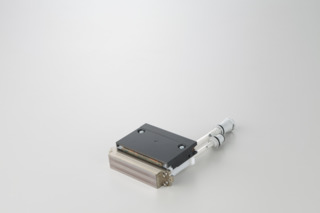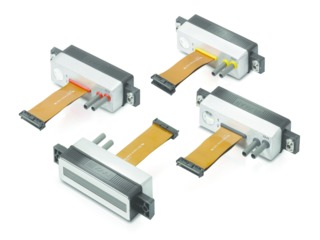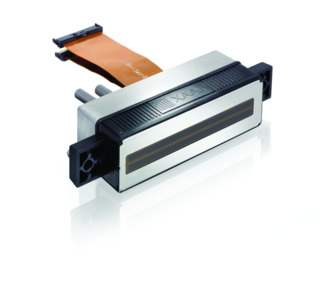Head Games: Inkjet Printheads Are Rapidly Evolving
Too detailed a discussion of inkjet printheads can be a bit “Inside Baseball,” but new printhead developments are enabling new applications and productivity improvements.

It’s probably safe to say that the vast majority of us know that the engine is important to the overall performance of a car. When we are car shopping, though, very few of us are likely to pop the hood and poke around underneath, hardcore gearheads notwithstanding. The relevant information is conveyed by the sticker and the salesperson, and besides, how many of us would have the slightest idea what we were looking at anyway?
The same is generally true when print providers are evaluating print engines. Few are well-versed in the nuances of printhead design and other aspects of the marking engine, so rely on the spec sheet and/or a salesperson to provide the relevant facts. And just as when we look at the specs of a car, like estimates of mileage, we know what figures to take with a grain of salt.
Too detailed a discussion of inkjet printheads can be a bit “Inside Baseball,” but new printhead developments are enabling new applications and productivity improvements. And while most people shopping for a production inkjet system are not likely to ask for a brand of printheads by name, it pays to know “enough to be dangerous.”
“They don’t need to get into the geometry of the nozzle plates,” said George Promis, VP of Production Ink Jet Solutions & Business Development for Ricoh, “but they need to know, are they going to work in their environment and are they going to be able to maintain, clean, and replace them.” Ricoh has long been a manufacturer of printheads for its own production inkjet solutions, as well as for other OEMs in a wide variety of industries, including commercial printing.
“Most printhead attributes are invisible to the customer,” said Jeff Folkins, Research Fellow at Xerox Corporation. Xerox uses a mix of third-party and internally developed printheads in its production inkjet offerings. “The conversation with the customer is very different than the conversation with the machine designer.”
The print service provider needs to ask, “What is this technology going to mean for me today, what is it going to mean for me in two years, three years, five, seven, 12 years?” said David Murphy, Worldwide Director of Marketing & Business Development for HP Inkjet Web Press Solutions. “The last thing any print service provider wants to hear after he or she invested one-and-a-half to six million dollars in a press is that somebody else comes out with something at Drupa 2016 that makes their investment obsolete.”
HP has announced a new printhead architecture called High Definition Nozzle Architecture (HDNA) that doubles the number of nozzles per inch (npi, which is not a unit of measurement we come across very often) from 1200 npi to 2400 npi. The HDNA printheads utilize what HP calls “dual drop weight,” which means that half of the 2400 nozzles jet the same droplet size, while the other half jet droplets that are less than half that size (HP is still tweaking the technology so hasn’t settled on a final droplet size as of this writing). The HDNA printheads, which are headed to a beta site later this year and will be available starting in 2016, will be a field upgrade to all HP inkjet presses installed since 2009. “When we introduce a new technology, it’s going to be field upgrades to offer a customer the ability to bring their press to the state of the art without having to upgrade their whole press.”
The inkjet—and inkjet printhead—market is taking off and has been for the past decade or so. Production printing is really only a small sliver of the entirety of the inkjet market, and there are a bewildering variety of new and emerging industrial printing applications, such as printing imitation leather on automotive dashboards, textures on floor tiles and laminates, solar panels, and a whole growing field of medical inkjet imaging. But these types of printing are not entirely relevant to commercial printers. Or are they?
“The applications not only for production print will expand beyond books, marketing materials, and direct mail, as will the ability to do plastics to increase applications in packaging,” said Promis. “What we can do in inkjet right now is kind of an open field.”
Packaging is the most conspicuous point of overlap between commercial printing and what we can think of as industrial printing, or printing that is part of the manufacturing of a part or product. Some of the big-name inkjet printing equipment vendors are introducing packaging presses, and all these new applications have been enabled by advancements in what can be pumped through printheads. For example, we often speak of “labels and packaging” in the same breath, but new developments are working at removing the label from the equation.
“From the packaging side of things, labels is a market that we’ve been in for a number of years,” said Mark Alexander, Director of Marketing for Xaar. “One of the more interesting recent developments is direct-to-shape printing. You eliminate the label and print directly onto the bottle, or plastic, glass, or metal.”
Direct-to-shape printing—think of things like the jug of laundry detergent that has all the “label” content printed right on the plastic—has traditionally been the purview of analog processes like pad or screen printing, but more brand owners are looking at ways of printing these materials digitally. And if you have been at all following industry trends for the last decade or more, you can pretty easily guess why.
“It’s really opening the brand owners’ minds to the creative aspects of engaging with their customers through the packaging in a much more variable-data and real-time perspective,” said Alexander. “Putting items onto the bottles that will be much more up-to-date and relevant to the people that are buying the product. It’s an exciting market.”
Another hot area that Xaar has been actively pursuing is printing on ceramics. It may come as surprise to many that inkjet printing on ceramic tiles, said Alexander, is actually much more prevalent than, say, inkjet printed labels.
“Since 2008, 2009, we’ve seen almost 50-percent conversion on a global basis of more and more tile production,” he said. “That’s massive compared to the level of penetration of inkjet and digital printing into labels. Ceramics has been massive in that respect, like wide-format graphics.”
New inkjet head developments are enabling new applications, some of which are still some time away from large-scale implementation and adoption by commercial printers who, after all, are still getting their heads around production inkjet printing on paper. But these new applications can be integrated with materials that printers are already running.
Take a printer who is doing documents for an insurance company—new policies, welcome packets, and so on. They’re making money by pumping high-volumes of documents through their presses. “We have customers running on average 11 to 12 million A4 impressions a month on the 5000,” said Promis. “But they might have a plastics line that’s doing similar volume and need a unique or specialized head. We have some customers that want to do insurance cards on polymerized teslin types of media.”
Still one head—and thus one press—will not be flexible enough to handle all the kinds of things a company may want to put through it. For printing on flexible packaging and plastics, you’re more likely going to want to use a UV-curable ink to ensure basic adhesion, but a printhead—and a press—that prints with UV ink would not be suitable for document printing; the ink cost would be prohibitive. So inkjet presses are flexible, but only up to a point, at least for the time being. “We have customers constantly asking us, ‘in the future can we do corrugated?’” said Promis. “The quick and dirty answer is, ‘probably not, based on what we sold you,’ but over time, inks and heads will have that ability.” Other mechanical aspects of the press may need to be altered, like the transport mechanism, but, said Promis, “that versatility and flexibility are what everyone is looking for.”
It’s tempting to blue-sky the ability to print on all these new non-paper substrates, but printhead developments are also expanding the range of good-old-fashioned ink-on-paper applications. HP’s HDNA printheads and dual drop weight technology enable a smoother gradation from shadows to midtones to highlights, which is especially noticeable in fleshtones and other high-end graphics, such as photos of automobiles, fine jewelry, and other luxury items that require precise dot placement and smooth tonality without grain.
“When you have this enhanced tonality, smoothness, and the ability to have greater addressability within the color gamut, the quality just looks better and you have more jobs that can be migrated to inkjet from offset,” said Murphy. “We see this opening up a variety of commercial applications that might just be out of reach of many printers today.” Applications like marketing collateral, data sheets, business ID, or anything that might require high-quality photos. “It also opens up more applications within publishing,” said Murphy. “Magazine onserts and inserts, even some custom magazines, catalogs, and magalogs.”
Looking to the future and all sorts of new applications and capabilities is all well and good, but what about today? Obviously, when a printer is evaluating an inkjet printing system, the printheads are an important element of the overall printing ecosystem. The suitability of any particular system will still predominantly be a function of what a particular OEM has done with the printheads.
“I liken it to the whole camera megapixel issue,” said Folkins. “Everyone is hyped up on how many megapixels. I have a 5-megapixel Nikon camera that takes 10,000 times better photos than my cellphone that has 10 megapixels. There are so many aspects that make for a good printer, you’ve got to rely on the machine designer to put it together.”
Indeed, it’s the rest of the press—the “context” of the printheads—that will provide most of the foliage on the decision tree. But is there anything about the printheads themselves that printers should be cognizant of?
Xerox’s Folkins cites basic “spec sheet” attributes like resolution, speed, and price—the more dots per inch (although that number isn’t always comparable from machine to machine), the faster those dots are spit out, and the cheaper it all is, are all advantages when evaluating print engines. But it will come down to what specific application you are looking to print.
Read more about the difference between actual resolution and apparent resolution here: MyPRINTResource.com/12054999
Xaar’s Alexander thinks about it in terms of the perennial topic of conversation surrounding digital equipment: total cost of ownership.
“There are a number of things in terms of total cost of ownership,” he said. “there is printhead cost, and there are two aspects to that. One is the ‘first-day cost,’ or how much does it cost to buy the initial system. The other is, how often do you have to replace the printheads and how much ink do you consume?” Then there are other elements that impact productivity and, indirectly, total cost of ownership. “Because it’s a production system they absolutely need reliability. Flexibility, the usability, and the longevity of the printheads are going to affect your total cost of ownership. How easy it is to replace the heads will affect your downtime. You want to know the printhead is going to run and run and run during production. It’s a combination of all those things.”
Reliability of heads is a key factor. “I think they need to look at reliability, and functionality that’s going to meet their needs in their environment over the period of time they need it,” said Promis. “Do they have the right technology, and an integral part of that technology is the printhead. They need to know the manufacturer is committed to meeting their demand.”
Indeed, what is the lifespan of given printheads, and how expensive and difficult are they to replace? How much downtime will be required? Will it require a service call or can the operator replace them?
“They have to look at the total picture, the total cost of printing, total cost of ownership, the upgradability, and the long-term lifecycle of the product,” said Murphy. “It’s more than just being able to do great quality; you have to have a great user experience.
“It gives the customer confidence that we will continue to invest in and improve that technology.”







